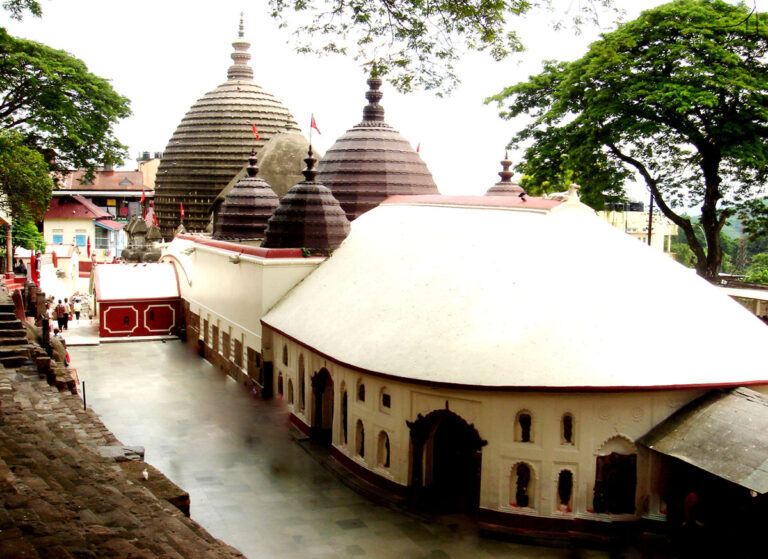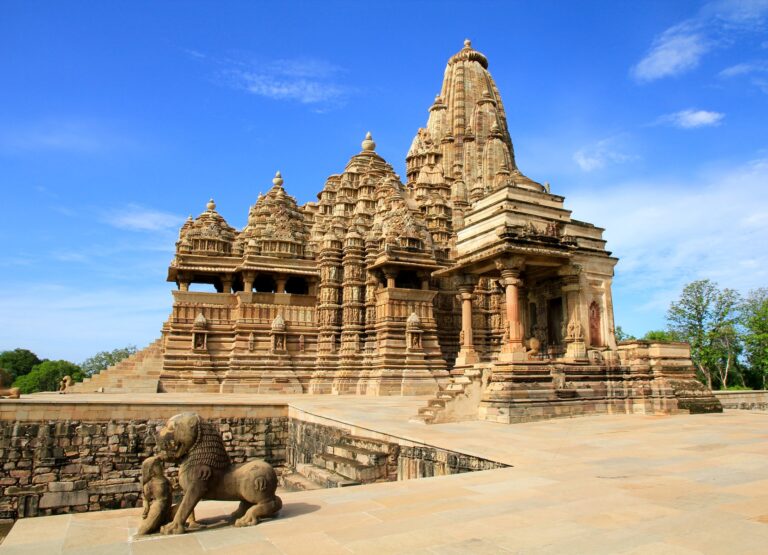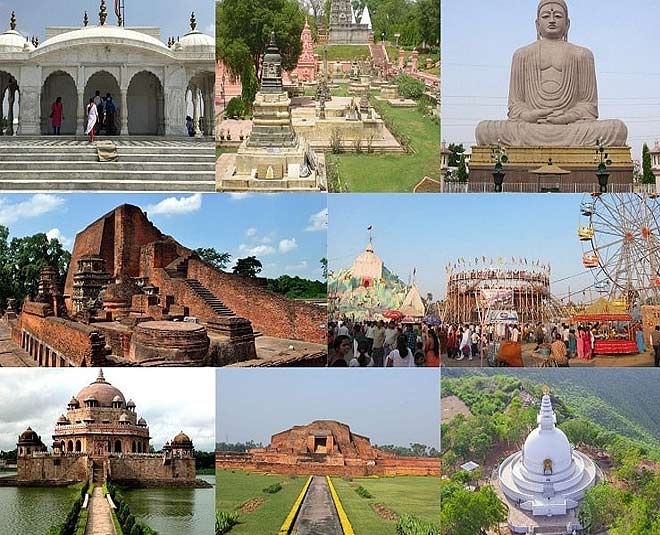History of Kedarnath: A Sacred Hindu Shrine in the Himalayas
Kedarnath, a town located in the northern state of Uttarakhand, India, is home to the famous Kedarnath Temple. The temple, dedicated to Lord Shiva, is one of the most revered Hindu shrines in the country. The temple is situated at an altitude of 3,583 meters (11,755 feet) above sea level and is surrounded by snow-capped peaks, making it a breathtaking sight for visitors.

The history of Kedarnath Temple is shrouded in myths and legends. According to popular belief, the temple was first built by the Pandavas, the heroes of the Indian epic Mahabharata. However, the present-day temple is said to have been built by Adi Shankaracharya, a revered Hindu philosopher and theologian, in the 8th century AD. The temple has since undergone several renovations and restorations, with the most recent one being in 2013 after a devastating flood in the region.
Key Takeaways
- Kedarnath Temple is one of the most revered Hindu shrines in India, dedicated to Lord Shiva.
- The temple’s history is steeped in myths and legends, with its origins dating back to the time of the Pandavas.
- The present-day temple was built by Adi Shankaracharya in the 8th century AD and has undergone several renovations and restorations over the years.
Historical Significance
Kedarnath Temple is a historically significant temple that attracts millions of devotees every year. The temple is believed to have been built by the Pandavas during the Mahabharata era. It is also known as one of the Panch Kedar temples and is an important pilgrimage site for Hindus.
Origins
According to Hindu mythology, after the Kurukshetra War, the Pandava brothers wanted to seek the blessings of Lord Shiva to atone for their sins. However, Lord Shiva was not willing to forgive them and took the form of a bull and went into hiding in Kedarnath. The Pandavas followed the bull and found Lord Shiva in the form of a Jyotirlinga. They built a temple around the Jyotirlinga, which is now known as the Kedarnath Temple.
Adi Shankara’s Influence
The Kedarnath Temple gained prominence during the 8th century when Adi Shankaracharya visited the temple and established a matha (monastery) in the region. Adi Shankara is believed to have attained Samadhi at Kedarnath, and his influence is still felt in the region. The matha he established is still operational and is an important center of learning for Hindu philosophy.
In conclusion, the history of Kedarnath Temple is rich and is an important pilgrimage site for Hindus. The temple’s origins can be traced back to the Mahabharata era, and its significance was further enhanced by Adi Shankaracharya’s influence. The temple continues to attract millions of devotees every year who come to seek the blessings of Lord Shiva.
Religious Significance
Kedarnath Temple is one of the most revered pilgrimage sites in Hinduism. It is believed that the temple was built by the Pandavas after the Mahabharata war to seek the blessings of Lord Shiva and atone for their sins. The temple is located in the Garhwal Himalayan range in Uttarakhand, at a height of 3,583 meters above sea level.
Jyotirlinga Status
Kedarnath Temple is one of the 12 Jyotirlingas, which are considered to be the most sacred abodes of Lord Shiva. The term Jyotirlinga means “pillar of light” and refers to the manifestation of Lord Shiva in the form of a lingam or a cylindrical structure. It is believed that by visiting and worshiping the Jyotirlingas, one can attain moksha or liberation from the cycle of birth and death.
Panch Kedar Temples
Kedarnath Temple is also one of the Panch Kedar temples, which are a group of five sacred shrines dedicated to Lord Shiva. The other four temples in the Panch Kedar circuit are Rudranath, Kalpeshwar, Madhyamaheshwar, and Tungnath. According to legend, after the Mahabharata war, the Pandavas wanted to seek the blessings of Lord Shiva to atone for their sins. Lord Shiva, however, did not want to meet them and took the form of a bull (Nandi). The Pandavas chased the bull and eventually found Lord Shiva at different places, where the Panch Kedar temples were later built.
Char Dham Yatra
Kedarnath Temple is also one of the four sacred sites in the Char Dham Yatra, which is a pilgrimage circuit in Uttarakhand. The other three sites in the Char Dham circuit are Badrinath, Gangotri, and Yamunotri. The Char Dham Yatra is considered to be one of the most important pilgrimages in Hinduism, and it is believed that by undertaking this journey, one can attain salvation.
In conclusion, Kedarnath Temple holds immense religious significance in Hinduism. It is revered as one of the 12 Jyotirlingas and one of the Panch Kedar temples. It is also an important site in the Char Dham Yatra, which is considered to be one of the most important pilgrimages in Hinduism.
Temple Architecture
The Kedarnath Temple is a significant temple that is part of the Chota Char Dham pilgrimage in India. The temple, which is dedicated to Lord Shiva, is located in the Garhwal Himalayan range near the Mandakini river in the state of Uttarakhand. The temple has a rich history and a unique architecture that attracts devotees and tourists from all over the world.
Temple Structure
The Kedarnath Temple is built using massive grey slabs of stones that are arranged in a rectangular platform. The temple is divided into two distinct sections called garbha griha and mandap. The garbha griha is the innermost sanctum of the temple where the lingam, which represents Lord Shiva, is placed. The mandap is the outer section of the temple where devotees can offer their prayers and seek blessings.
The temple’s architecture is a perfect example of ancient Indian temple architecture. The temple’s walls are adorned with intricate carvings and religious symbols. The temple’s entrance is decorated with a beautiful arch that is made of stone. The temple’s roof is made of stone slabs that are supported by wooden beams.
Religious Symbols
The Kedarnath Temple has several religious symbols that are associated with Lord Shiva. The temple’s main entrance is decorated with a Nandi bull statue, which is considered to be the vehicle of Lord Shiva. The temple’s lingam is also a significant religious symbol that represents Lord Shiva’s energy and power.
The temple’s architecture and religious symbols are designed to create a peaceful and spiritual atmosphere for devotees. The temple is also home to several Brahmins who perform daily rituals and ceremonies to maintain the temple’s sanctity.
In conclusion, the Kedarnath Temple’s architecture and religious symbols are an essential part of the history of Kedarnath. The temple’s unique design and religious symbols create a spiritual atmosphere that attracts devotees and tourists from all over the world.
Mythology and Legends
The Kedarnath temple holds immense significance in Hindu mythology and is associated with various legends. One of the most popular legends associated with the temple is the Legend of Pandavas. According to this legend, the Pandavas, the heroes of the Hindu epic, the Mahabharata, built the Kedarnath temple as a way to atone for their sins. It is believed that after the Kurukshetra war, the Pandavas came to Kedarnath to seek the blessings of Lord Shiva. However, Lord Shiva was not pleased with them as they had killed their own kin in the war. To seek forgiveness, the Pandavas decided to build a temple dedicated to Lord Shiva at Kedarnath.
Another popular legend associated with the temple is the Legend of Kashi Vishwanath. As per this legend, Lord Shiva, in the form of Kashi Vishwanath, came to Kedarnath to avoid the crowds at his original abode in Kashi. It is believed that Lord Shiva resided at Kedarnath for a long time and even today, pilgrims visiting Kedarnath make it a point to visit Kashi Vishwanath temple in Varanasi.
The temple is also associated with the Legend of Nath. According to this legend, Lord Shiva, in the form of Nath, came to Kedarnath to meditate and rid himself of the curse of Brahma. It is believed that Lord Shiva was so pleased with the peaceful and serene surroundings of Kedarnath that he decided to make it his home.
The Legend of Nar and Narayan is another popular legend associated with the temple. According to this legend, Lord Vishnu, in the form of Nar and Narayan, came to Kedarnath to meditate and seek the blessings of Lord Shiva. It is believed that Lord Shiva was so pleased with their devotion that he blessed them with immortality.
The temple is also associated with the Legend of Kedara. According to this legend, the temple was built by Adi Shankaracharya in the 8th century. It is believed that Adi Shankaracharya visited Kedarnath and was so impressed with the serene surroundings that he decided to establish a temple dedicated to Lord Shiva at the site.
In addition to these legends, the temple is also associated with the Legend of Draupadi, the Legend of Ganga, and the Legend of Parvati. These legends add to the rich history of Kedarnath temple in Hindu mythology.
Modern Developments and Controversies
Tourism and Infrastructure
In recent years, the Kedarnath temple has seen a surge in tourism, leading to a significant increase in infrastructure development in the surrounding areas. The Uttarakhand government has undertaken several initiatives to improve the facilities for pilgrims, including the construction of new guest houses, roads, and helipads. However, these developments have also raised concerns about their impact on the fragile ecosystem of the region.
The use of ponies and palanquins to transport pilgrims to the temple has also been a point of controversy. Many animal rights activists have raised concerns about the welfare of the animals and their treatment by the handlers. The government has taken steps to regulate the use of these modes of transportation and has encouraged visitors to use eco-friendly alternatives like trekking or electric vehicles.
Scientific Studies
Geologists from the Wadia Institute have conducted several studies on the region to understand the geological processes that led to the devastating floods of 2013. The studies have highlighted the need for better disaster management and infrastructure planning in the region. The government has taken steps to implement the recommendations of these studies and has also set up early warning systems to alert visitors in case of any natural disasters.
Apart from geological studies, the temple has also been a subject of scientific research. The Kritya-Kalpataru, a Sanskrit text, describes the temple as a place where one can attain moksha or liberation. Researchers have studied the effects of the temple’s unique location and the vibrations generated by the chanting of mantras on the human body and mind.
Overall, while the developments in infrastructure have made the pilgrimage easier and more accessible, they have also raised concerns about their impact on the environment and animal welfare. The scientific studies have highlighted the need for better disaster management and understanding of the temple’s significance.
Geographical Context
Location
Kedarnath is a town located in the Rudraprayag district of Uttarakhand, India. It is situated at an altitude of 3,583 meters above sea level, near the Mandakini river in the Garhwal Himalayas. The town is known for the Kedarnath Temple, which is one of the twelve jyotirlingas of Lord Shiva. Kedarnath is also a part of the Char Dham Yatra, a pilgrimage to four holy shrines in Uttarakhand.
Natural Disasters
Kedarnath has been prone to natural disasters, including floods, flash floods, and landslides. In June 2013, the town was hit by a massive flood caused by heavy rainfall, which resulted in the deaths of thousands of people. The flood also caused extensive damage to the infrastructure and the Kedarnath Temple. In 2018, the town was hit by another flash flood, which caused some damage but was not as severe as the 2013 flood.
Climate Changes
The Garhwal Himalayas, where Kedarnath is located, has been affected by climate changes, including the Little Ice Age, a period of cooling that lasted from the mid-16th century to the mid-19th century. The region has also experienced changes in precipitation patterns, resulting in increased frequency and intensity of extreme weather events such as floods and landslides. The Kedarnath peak, which is the highest peak in the region, has seen a reduction in snow cover in recent years due to rising temperatures.
In summary, Kedarnath is a town located in the Garhwal Himalayas of Uttarakhand, India, known for the Kedarnath Temple and its association with the Char Dham Yatra. The town has been affected by natural disasters such as floods and landslides, and is also experiencing the effects of climate changes.
Frequently Asked Questions
What is the history of the Kedarnath?
The history of Kedarnath dates back to ancient times. According to historians, the Kedarnath temple was built in the 7th and 8th century CE. It is believed that the temple was initially built by the Pandavas, and later renovated by Adi Shankaracharya in the 8th century. Over the years, the temple has undergone several renovations and restorations, and it remains a significant pilgrimage site for Hindus.
What is the story behind the Kedarnath Shivling?
According to Hindu mythology, the Kedarnath Shivling is believed to be one of the 12 Jyotirlingas of Lord Shiva. It is said that after the great war of Mahabharata, the Pandavas went in search of Lord Shiva to seek forgiveness for their sins. Lord Shiva, however, did not want to forgive them and disguised himself as a bull. The Pandavas were able to recognize Lord Shiva and built the Kedarnath Temple at the spot where the bull disappeared.
How far is the Kedarnath Temple from the nearest town?
The Kedarnath Temple is located in the Garhwal region of Uttarakhand, India. The nearest town is Guptkashi, which is about 32 km away from the temple. From Guptkashi, one can take a shared taxi or a private taxi to reach Gaurikund, which is the base camp for the trek to Kedarnath. The trek from Gaurikund to Kedarnath is about 14 km long.
What is the significance of the Kedarnath Temple?
The Kedarnath Temple is one of the holiest pilgrimage sites for Hindus. It is believed that visiting the temple and taking a dip in the nearby Kedarnath Mandakini River can wash away one’s sins. The temple is also significant because it is one of the 12 Jyotirlingas of Lord Shiva and is believed to be a place where Lord Shiva himself resides.
What is the temperature like in Kedarnath?
Kedarnath is located at an altitude of 3,583 meters above sea level, and the temperature can vary depending on the time of the year. During the summer months (May to June), the temperature can range from 15°C to 20°C. However, during the winter months (November to February), the temperature can drop to as low as -5°C.
Who built the Kedarnath Temple?
While the origins of the Kedarnath Temple are not certain, it is believed that the temple was initially built by the Pandavas. The temple was later renovated by Adi Shankaracharya in the 8th century. Over the years, the temple has undergone several renovations and restorations, and it remains a significant pilgrimage site for Hindus.





